Strength Training for Runners & Endurance Athletes
One of the most popular topics I hear about regularly from runners and triathletes is strength training: Can strength training make me a better runner or athlete? How often should I be strength training? What exercises should I do and when? How can I improve my core? To help us answer these questions and more, I’m excited to introduce you to William Negus who is taking over runladylike.com today to talk abut strength training for runners and endurance athletes. Will is a NASM certified personal trainer with FitWit who is breaking it all down for us. We even get the benefit of seeing pictures of him doing all the strength work we should be focusing on!
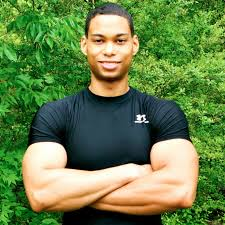
Strength Training for Endurance Athletes
By: William Negus
The sun beats down as dust swirls upon the smooth road you travel. Finish line in sight, every fiber in your being fights to carry you this final stretch, where months of endurance training have led you. Nothing exists but your current stride, an aching heartbeat and deep roaring breaths. You cross the finish line, but the race never truly ends, and immediately you’re thinking of ways to improve your performance.
As an endurance athlete, you push yourself to travel faster, longer and more efficiently. And while cardio alone can bring great improvements to your endurance game, there’s something else that should be considered. Strength training might seem contradictory to becoming a better endurance athlete, and although it’s often correlated with packing on bulky muscle mass, this doesn’t have to be the case. It has been proven time and time again to improve speed, endurance and efficiency.
Now, I’m not saying that you need to befriend some swollen bodybuilders and become a gym rat to improve your 5K times, but rather devote 1 to 3 hours a week to a handful of strength exercises. So, what specific benefits will strength training give you as an endurance athlete and how often should you strength train? When is the best time for a strength workout? What are the best strength exercises for you and are there any that should be avoided? And finally, what’s the best way to improve your core strength? Let’s find out!
Benefits Endurance Athletes Gain from Strength Training
Strength training is important in many sports, including endurance sports, where it’s often neglected. While it’s commonly assumed that strength training will give you excess muscle mass, which is probably an endurance athlete’s worst nightmare, this simply isn’t the case if you train according to your goals. Numerous studies have shown that strength training can provide many benefits to endurance athletes. These include correcting muscle imbalances, avoiding injuries and improving an endurance athlete’s ability to work harder and longer.
A 2008 study assigned trained runners to either a control group or an intervention group. The control group continued their normal endurance training while the intervention group performed half-squats 3 times a week for 8 weeks in addition to their endurance training. VO2 max (efficiency of the oxygen you use) and body weight remained the same in both groups, but the strength training group’s time to exhaustion at maximum aerobic speed improved by 21.3%!
In another study published in 2005, 3 groups were observed. One group performed only endurance training, another only strength training and the last both strength and endurance training. The group that combined strength and endurance training improved an average of 8.6% in a 4K time trial, increased their VO2 max by an average of 10.4% and ran to exhaustion 13.4% longer than the other groups.
Finally, a systematic review in 2007 concluded that strength training combined with endurance training resulted in a collective 4.6% improvement in running economy and a 2.9% improvement in 3K/5K performances.
The evidence is out there: strength training and endurance training together will help you perform faster, longer and stronger.
How often should endurance athletes strength train during their training season?
Strength training doesn’t have to take up a lot of time and it’s recommended that only 30 to 90 minutes of strength exercise be performed twice a week during training season to see improvements.
Exercises to Do and to Avoid
Endurance sports consist of repetitive movements that constantly activate particular muscles. For example, a runner is always engaging his/her quadriceps, hamstrings, glutes, hip flexors, calves, biceps and upper/lower abs. While it’s important to strengthen the muscles used in your chosen sport(s), it’s equally important to look at the big picture.
Posture plays a critical role in being a successful endurance athlete and often, muscles that aren’t used in the repetitive motions within a sport are responsible for keeping posture in check. For example, a runner doesn’t really use his/her back to run, but its function for keeping the spine neutral and thus, promoting good form, is essential to running well.
An effective strength-training program for an endurance athlete will target the whole body, with an emphasis on the primary muscles used in the sport. The goal is to be balanced as your body operates as one cohesive unit.
To be efficient in your training, focus on compound exercises (those that involve more than one muscle group, such as squats) instead of isolation exercises (those that involve just one muscle group, such as biceps curls).
Recommended Strength Exercises
The following exercises will improve overall body strength, with an emphasis on the legs. I feel that any runner, cyclist or swimmer would benefit from them. I’d recommend performing 3 to 4 sets of 5 to 20 reps for 8 to 10 of these exercises per strength workout. Include 3 core exercises at the end of your strength workout.
Squats
Squats develop strong glutes, hamstrings, quadriceps and calves – muscles essential for all endurance athletes.
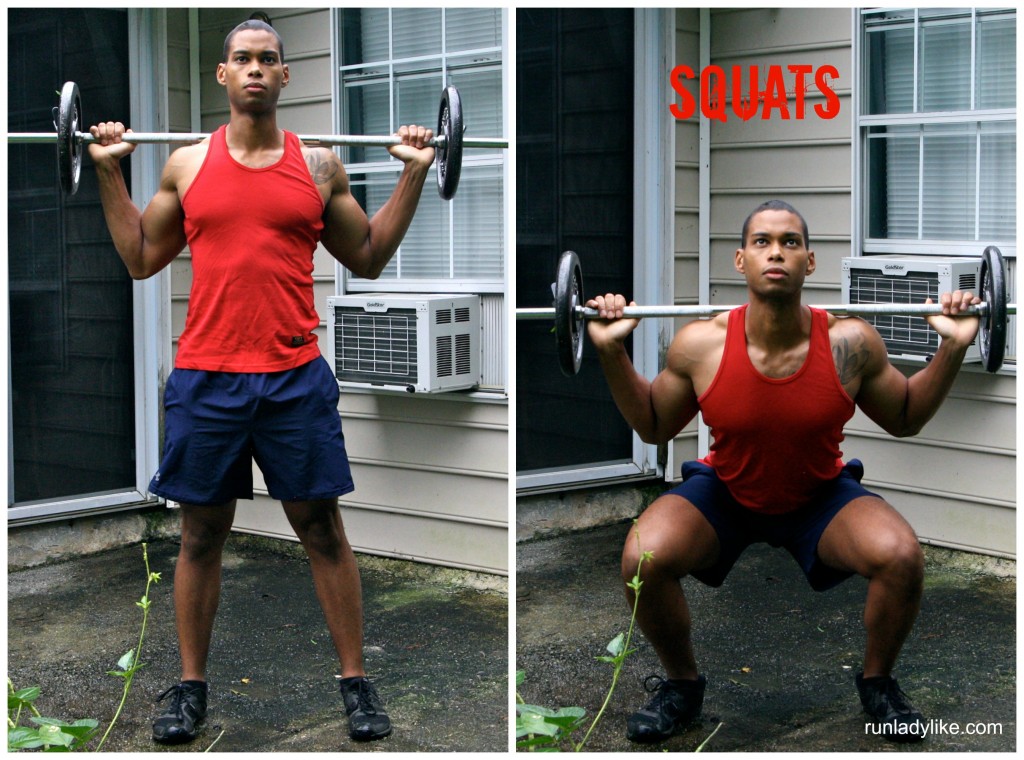
To perform a squat:
- Start with the bar on your back (where it’s comfortable), feet shoulder width apart, and toes pointing forward.
- Chest up, inhale, unlock your hips and sit back into your heels, keeping your knees over the second and third toe of each foot.
- Bring your butt to knee height or lower.
- Exhale forcefully, squeeze your glutes, activate your core and drive through your heels to bring the weight back up to starting position.
- Remember to keep your chest up and maintain a neutral back. Keep your core activated by pulling your belly button into your spine.
One-Legged Squats
One-legged squats are great for improving core stability and overall leg strength.
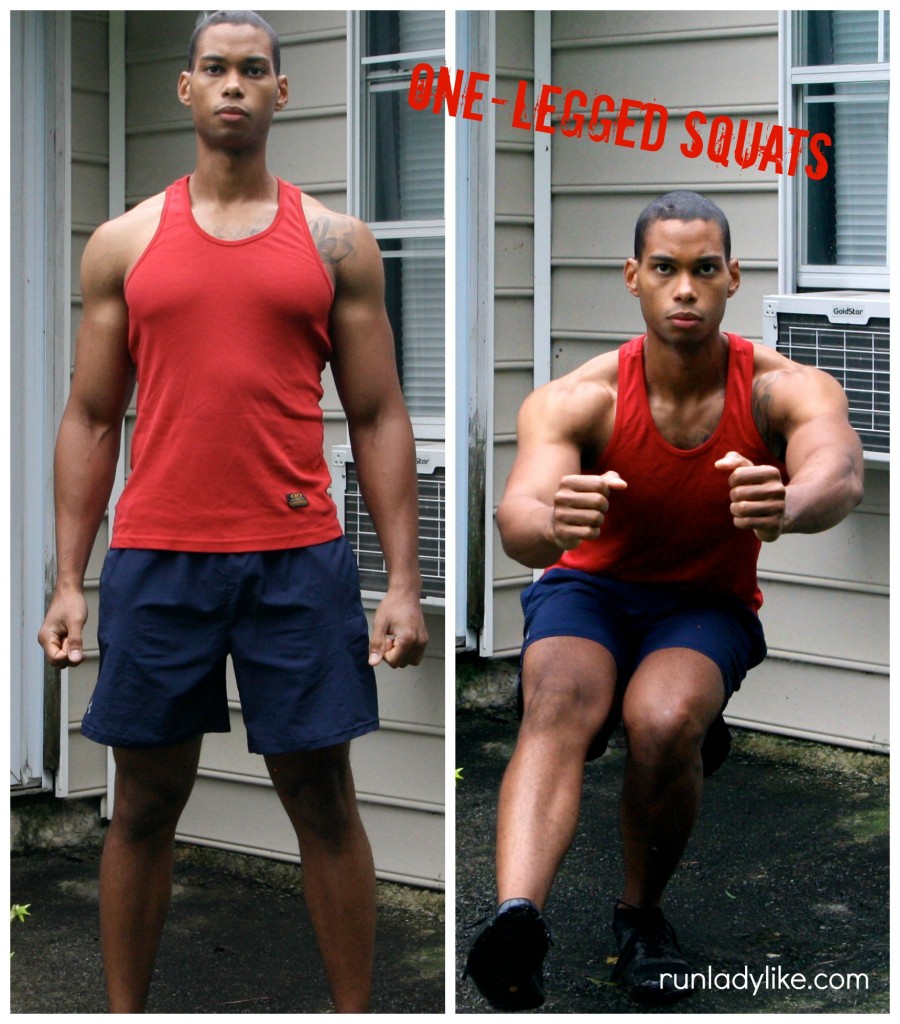
To perform a one-legged squat:
- Start standing upright with your feet together.
- Unhinge hips and bring one foot off of the ground, straightening that leg in front of you while squatting on the other leg.
- Keep your core activated by drawing your belly button into your spine.
- Drive through the planted heel and squeeze your glutes to return to standing position.
Push-ups
Push-ups are great for the chest, shoulders and triceps. This is an especially beneficial exercise for swimmers.
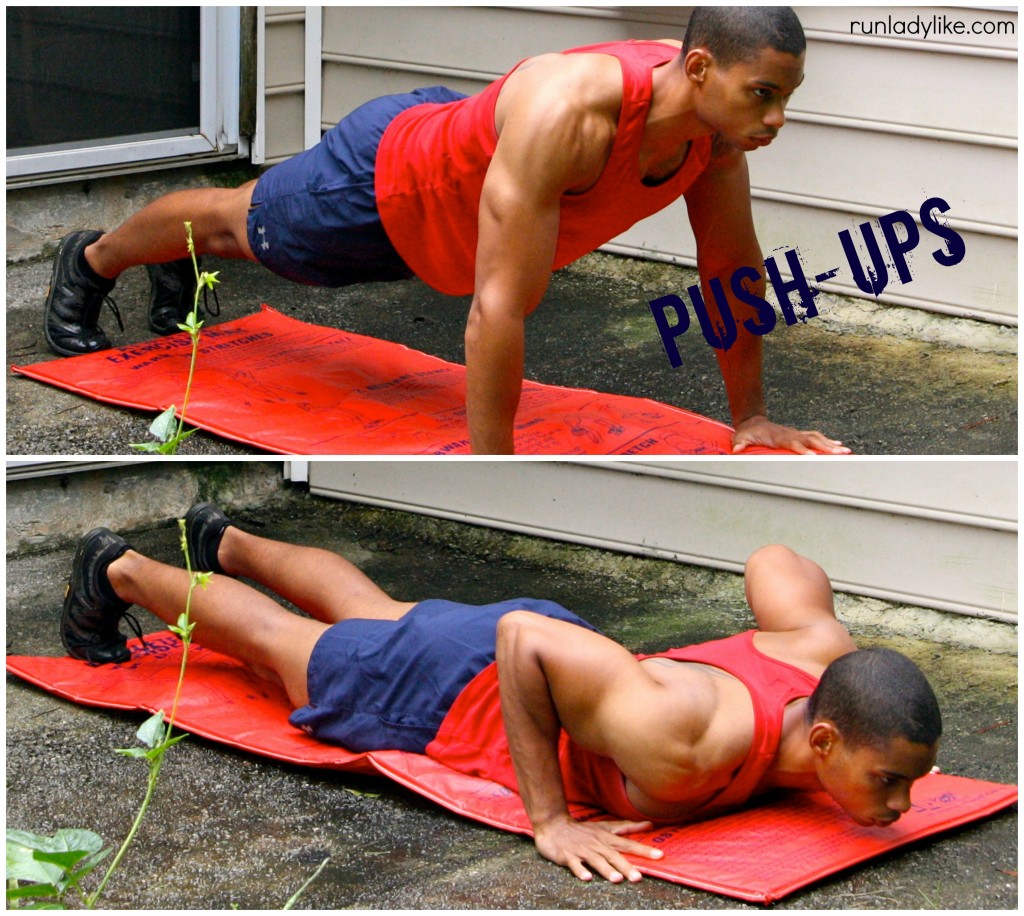
To perform a push-up:
- Lie on the floor face down and place hands just outside of your shoulders, index fingers pointing forward and toes on the ground.
- Squeeze your glutes to maintain a straight line throughout your body
- Push yourself up with your chest and triceps.
- Lower yourself to starting position.
Forward Lunges
Forward lunges are great for strengthening the quads, hamstrings, and glutes as well as improving hip mobility. These will target more of the quads than the hamstrings and glutes.
To perform a forward lunge:
- Stand upright with a barbell on your back (where it’s comfortable), feet shoulder-width apart.
- Take a big step forward with one leg, keeping chest up.
- Land with your forward knee over the second and third toe. Your forward leg should form a 90-degree angle and the rear knee should barely touch the ground.
- Squeeze glutes and drive through your forward heel to return to starting position.
- Repeat on the other leg.
Reverse Lunges
Reverse lunges are great for strengthening the quads, hamstrings and glutes, as well as improving hip mobility. These will target more of the hamstrings and glutes than the quadriceps.
To perform a reverse lunge:
- Stand upright with a barbell on your back (where it’s comfortable), feet shoulder-width apart.
- Take a big step back with one leg, keeping chest up.
- Land with your forward knee over the second and third toe. Your forward leg should form a 90-degree angle and the rear knee should barely touch the ground.
- Squeeze glutes and drive through the balls of your rear foot to return to starting position.
- Repeat on the other leg.
Side Lunges
Side lunges are great for strengthening the quads, glutes and adductors, as well as improving hip mobility. These will target more of the adductors than the quads or glutes.
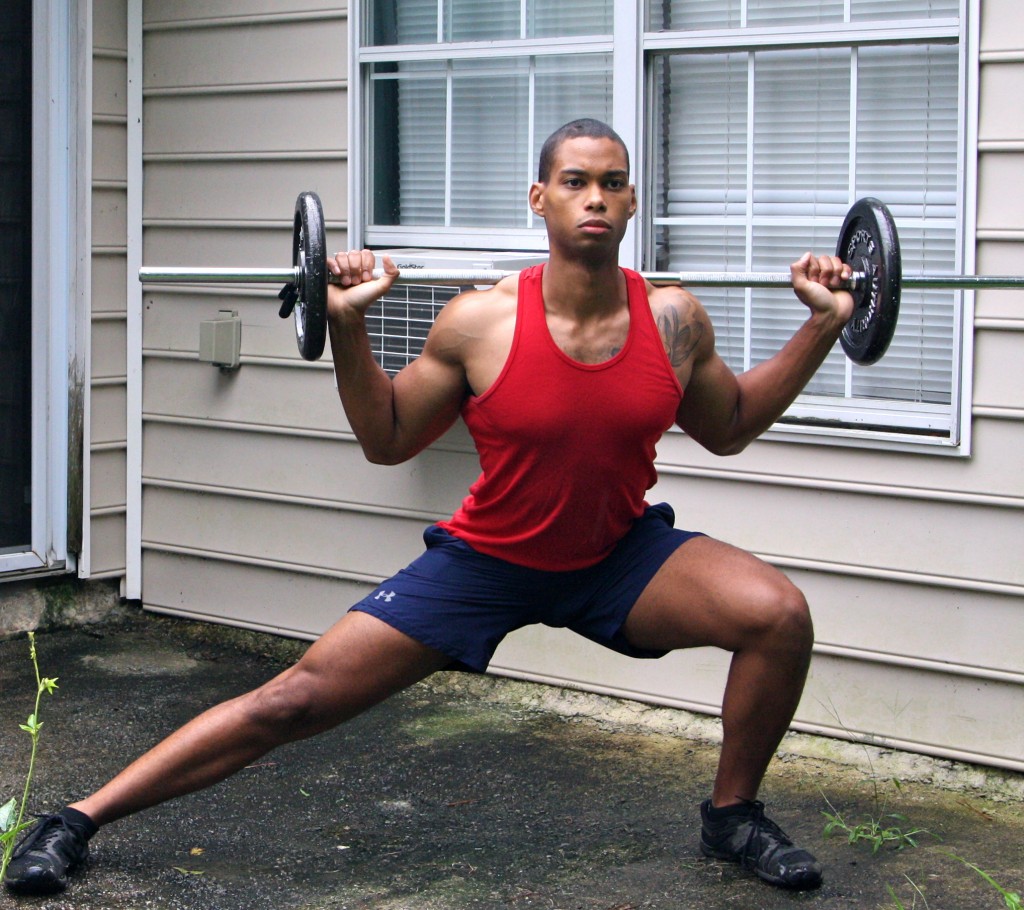
To perform a side lunge:
- Stand upright with a barbell on your back (where it’s comfortable), feet shoulder-width apart.
- Take a big step to the side with one leg, keeping chest up.
- Land with your lead knee over the second and third toe. Your lead leg should form a 90-degree angle and the rear leg should be straight.
- Squeeze glutes and drive through the heel of your lead foot to return to starting position.
- Repeat on the other leg.
Pull-ups
Pull-ups are great for overall back strength, which is vital for swimming and correct posture in any endeavor.
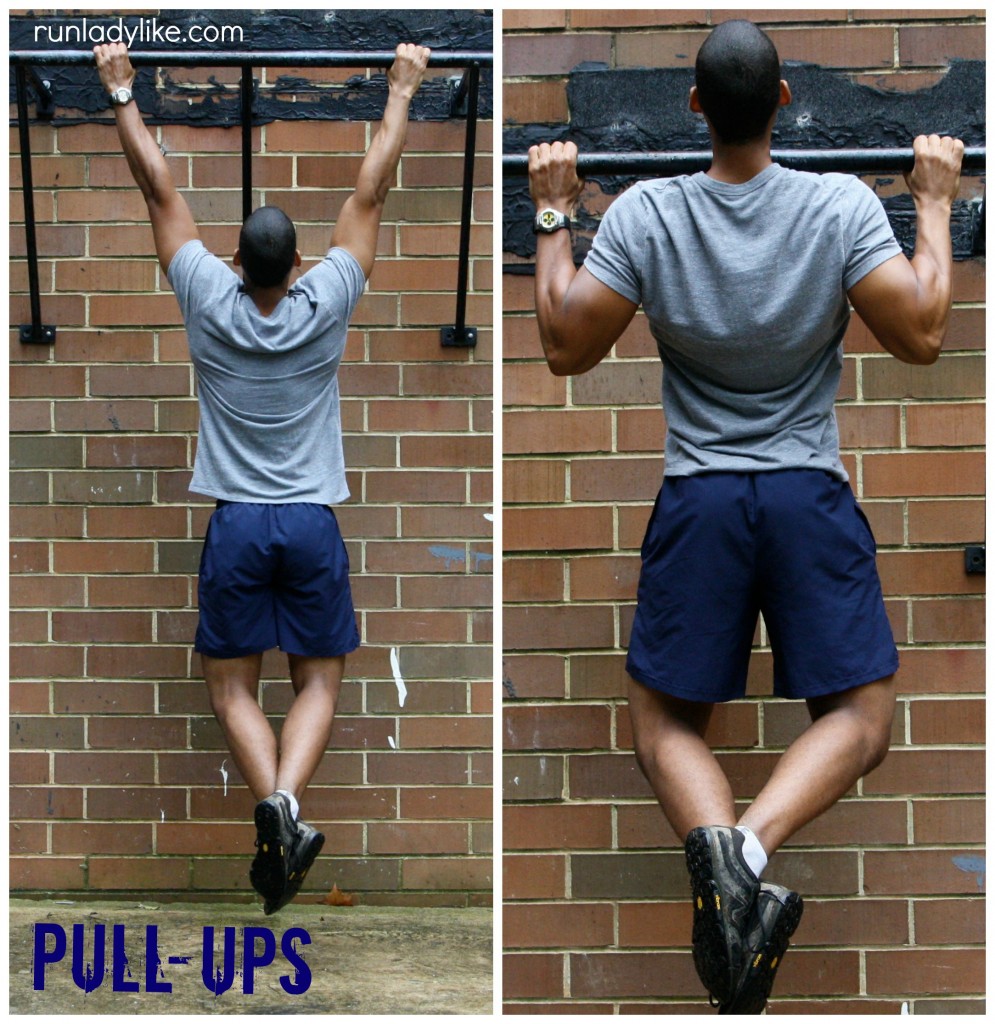
To perform a pull-up:
- Grab pull-up bar and maintain a neutral back, sticking chest out
- Draw upper arms and shoulders down and back, focusing on the contraction in your back
- Bring chest to the bar
- Slowly lower yourself
Bent-over Rows
Bent-over rows are a great exercise for overall back strength.
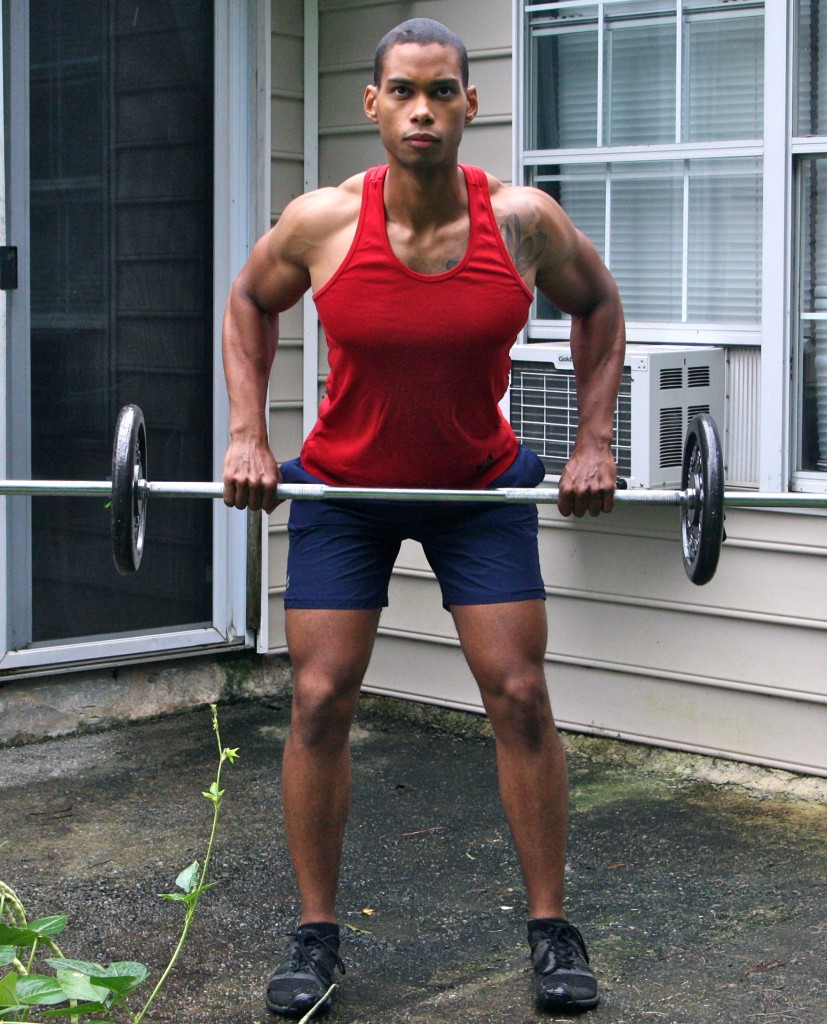
To perform a bent-over row:
- Stand with feet shoulder-width apart over barbell.
- Bring barbell up with hands just outside of shoulder-width apart and stand upright.
- Hinge hips, sending your butt back and keeping chest up.
- Squeeze lats and pull the bar up to your midsection.
- Return bar to hanging just above your knees.
Deadlifts
Deadlifts are great for the glutes, quads, hamstrings, back, and core.
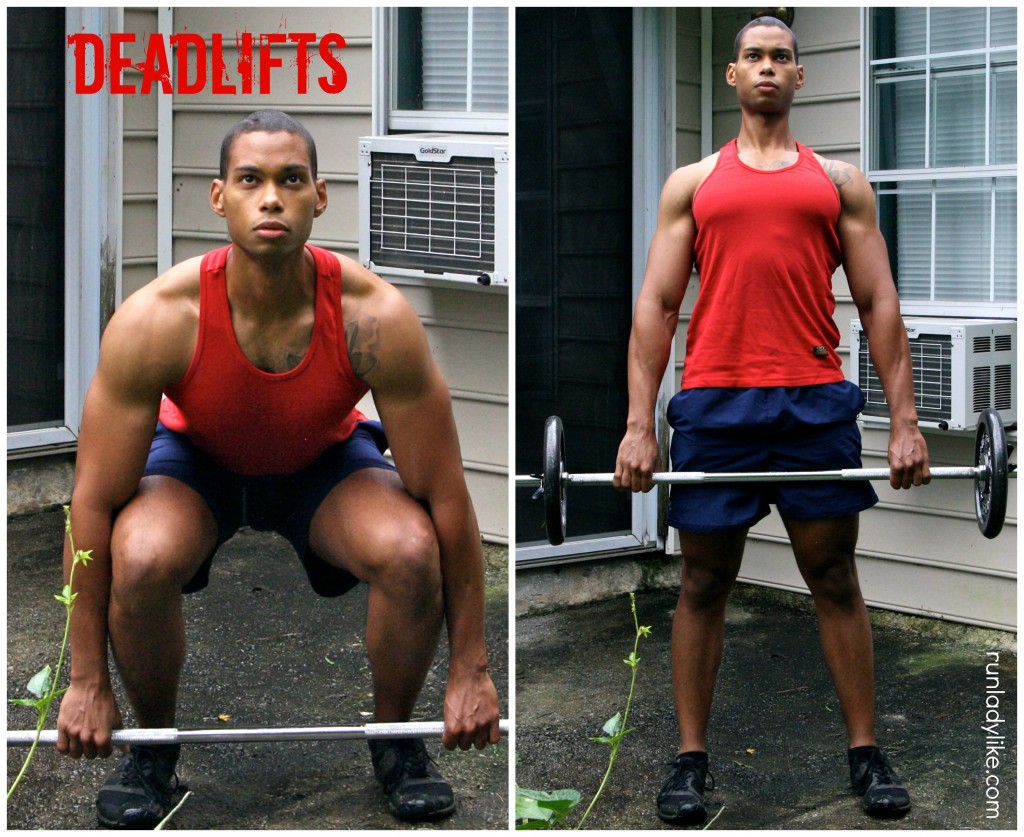
To perform a deadlift:
- Stand over the barbell (your feet should be split in half by the bar when you look down at them).
- Grab the bar with your hands just outside of shoulder-width and arms vertical.
- Bend through your knees until your shins hit the bar.
- Lift your chest.
- Drive through your heels and pull the bar up. Picture pushing the ground away from you.
Stiff-Legged Deadlifts
The stiff-legged deadlift is a lot like the standard deadlift. The only difference is that your hamstrings will be targeted to a much greater degree, making this a great option for runners.
To perform the stiff-legged deadlift:
- Stand over the barbell (your feet should be split in half by the bar when you look down at them).
- Grab the bar with your hands just outside of shoulder-width and arms vertical.
- Maintain a slight bend in your knees.
- Lift your chest.
- Drive through your heels and pull the bar up. Picture pushing the ground away from you.
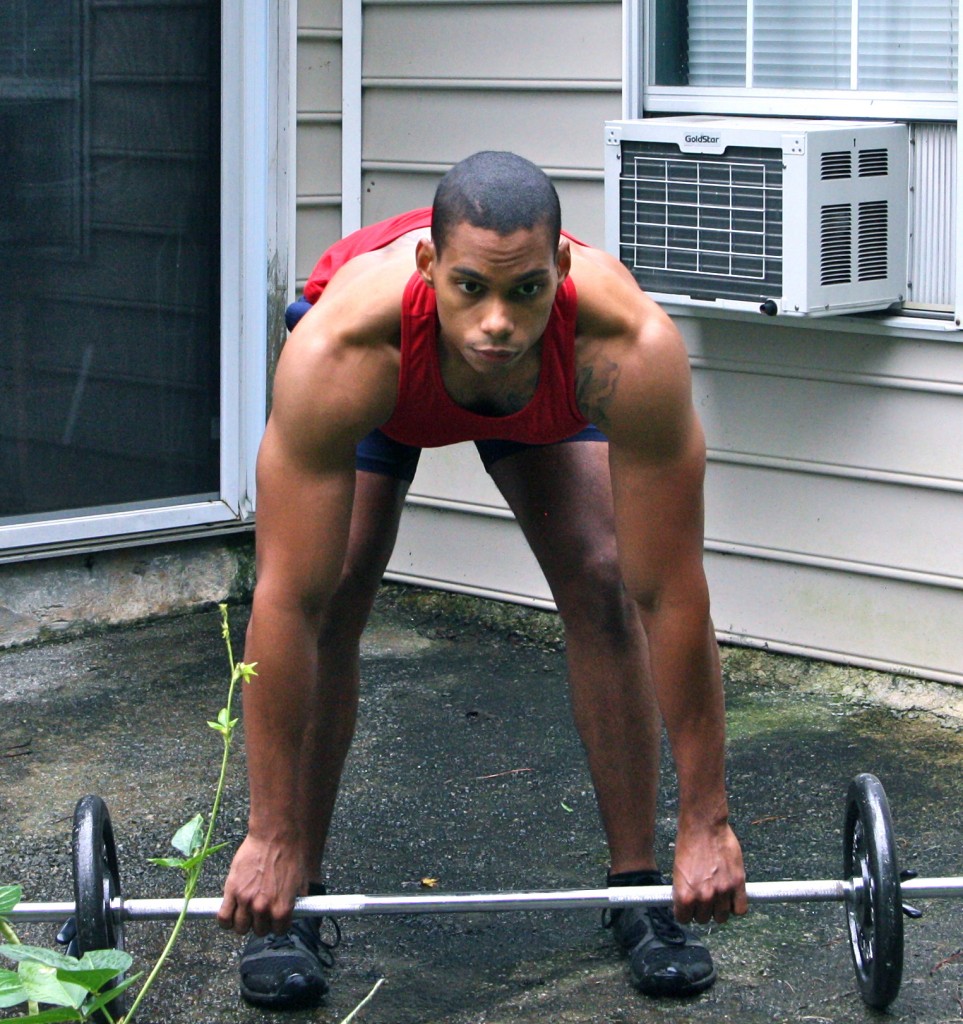
Best Way for Runners & Triathletes to Strengthen Their Core
The core moves in 3 ways: flexion (such as in a crunch), extension (such as in straightening or hyper-extending your back) and rotation (such as in throwing a ball).
Core Flexion Exercise
Sit-ups
Sit-ups are great for developing the upper and lower abs, which play a big role in core stability.

To perform a sit-up:
- Lie on your back with knees bent and heels on the floor.
- Bring your arms forward and contract you abs to bring torso upright.
- Return to starting position.
Core Extension Exercise
Supermans
Supermans are good for strengthening the lower back. Doing this exercise regularly is a good way to promote correct posture and prevent injury.
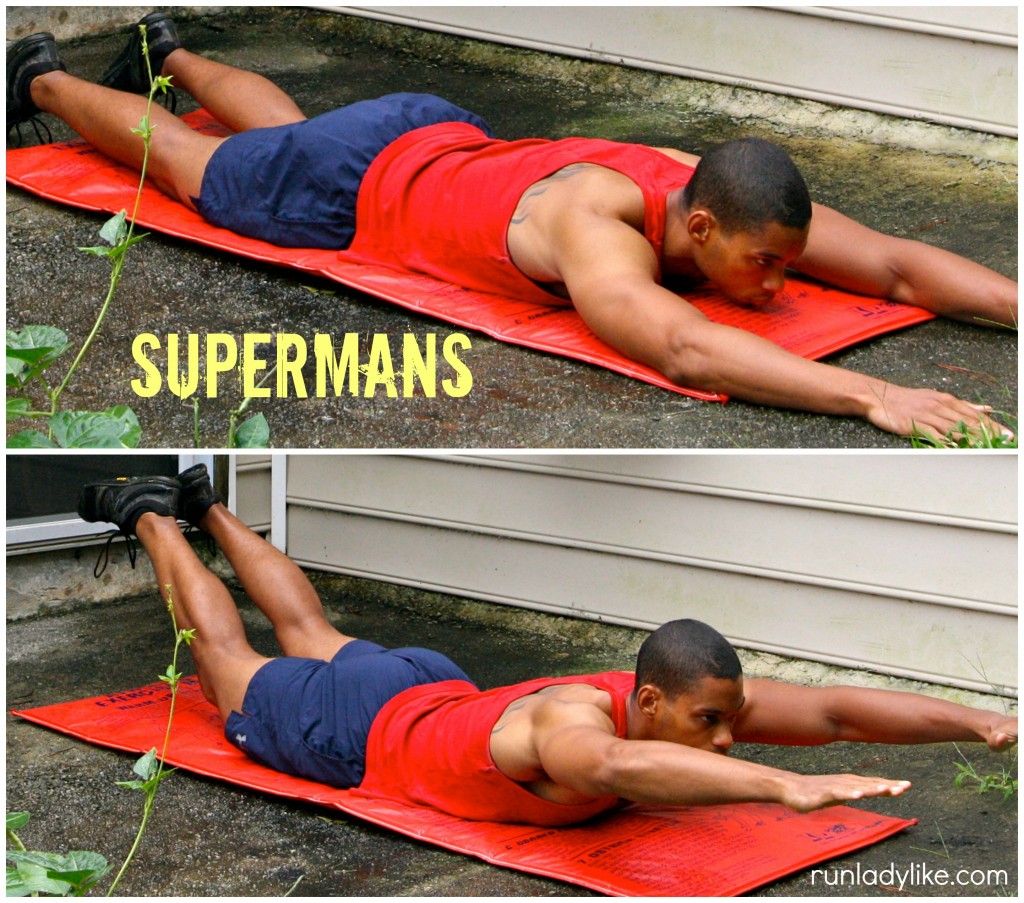
To do the superman:
- Lie face down with hands outstretched in front of you and feet outstretched behind you.
- Squeeze glutes and lower back, bringing hands and feet off of the ground.
- Return to starting position.
Core Rotation Exercise
Russian Twist
The Russian twist is a good exercise to develop the sides of your abs, which help to rotate your torso.
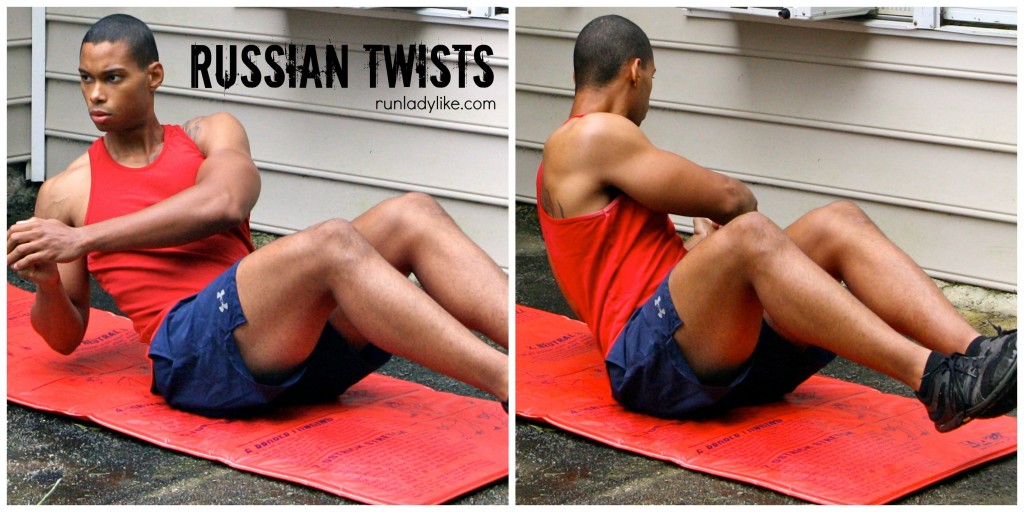
To perform the Russian twist:
- Sit on your butt with your torso at a 45-degree angle and back straight, feet off of the ground with knees bent.
- Turn your torso to face one side, holding hands together in front of you.
- Rotate your torso, leading with your eyes while continuing to hold your hands out in front of you.
These are just some of the many exercises you can do for a strong core. It’s important to include at least one core exercise for each of its movements (flexion, extension and rotation) at the end of each strength workout. Perform 3 to 4 sets of 10 to 20 reps.
Best Time for Strength Training
Strength training and endurance training require a lot of energy, so performing either one back to back is a recipe for disaster. Even if you can effectively fuel your body with proper nutrition between workouts, you will still end up training in “recovery mode.”
It’s best to have a strength workout on a separate day from an endurance workout so that your body can properly recover.
In conclusion, everything in life is about balance, and just as a strength athlete shouldn’t avoid cardio, an endurance athlete shouldn’t avoid strength training. By being open-minded and training intelligently, we can surpass our wildest expectations and become the best athletes possible.
Resources
Check out the following for more info on both strength and endurance training:
www.t-nation.com
www.bodybuilding.com
www.runnersworld.com
www.running.competitor.com
www.ericcressey.com
http://www.romanfitnesssystems.com/
www.simplyshredded.com
www.cutandjacked.com
Do you strength train regularly? If so, are Will’s exercises part of your regular regimen? If you try Will’s workout, let us know what you think!



Comments
I strength train about once a week using Insanity workout videos. Some of the moves are very similar, but I don’t use weights.
This is brilliant thanks. Since a few injuries I’ve been incorporating a lot more strength training to my workouts. I go to pump and circuits in the week and I feel stronger in my runs because of it.
One move I try and do every other day are side lifts (with a resistance band around my ankle) as my hips are quite weak.
I strength train twice a week with weights. As this article mentions, it is great to strengthen those muscles you need for any type of training. As we age, women also start to lose muscle mass and you can only get that back with weight training. Weight training also boosts your metabolism and unlike straight cardio, you will continue to burn calories for HOURS after you stop lifting weights. Needless to say, however, I find it difficult to lift weights in the middle of training for a triathlon. Getting in 9 workouts in 6 days is tough enough, so I have tried to do a few exercises right after a long endurance run, for example, or even 20 quick minutes at home. This is a great article. Thanks!
I do almost all of these exercises… when I actually strength train. I definitely am not as good about strength training as I need to be. Thanks for the reminder about how important it is!
I typically strength train twice a week and include many of these exercises!
[…] A good guest post on RunLadyLike – equipment necessary […]
[…] Info on strength training for runners. […]
[…] Strength Training For Runners and Endurance Athletes (runladylike) – I love all of these lifts…and even if you’re not a runner, mastering these basics is key for improving your strength training. […]